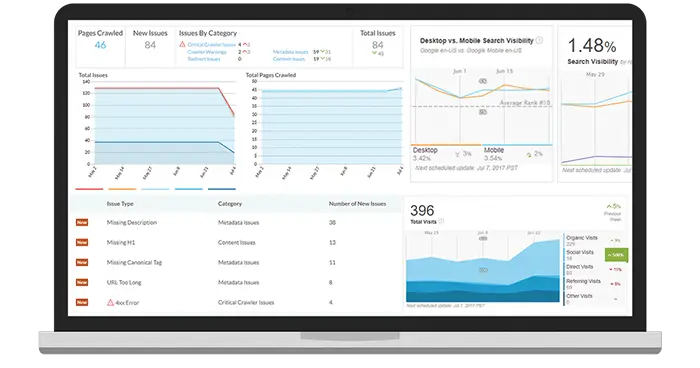Search engine optimization (SEO) is the process of optimizing your website and content to produce high rankings on search engines. Ideally, a webpage should be at the top-most section of search engine results pages (SERPs) for keywords suitable to your products and services. In a nutshell, SEO is the practice of boosting traffic to your web platform.
Whether you’re a web developer, digital marketer, or mold remediation expert, having a solid presence in the digital realm is crucial to your inbound marketing strategy. Hence, creating an SEO strategy is an excellent start to improving content visibility, increasing organic traffic, and acquiring new clients.
Suppose you’ve created and implemented a seemingly sound SEO strategy. But how would you know if it’s effective? If this question bothers you a lot, this article should be able to help.
In this guide, you’ll discover some of the most reliable SEO testing methods to determine if your SEO strategy is working or not. Read on to find out how.

1. Check Your Website Traffic
Generally, if your website isn’t receiving enough traffic, your SEO strategy is probably not working. This is because SEO helps search engines rank your website higher, giving you more traffic. Therefore, if web traffic increases, that means your SEO strategy is performing well.
Web traffic doesn’t necessarily affect SEO ranking, but click-through rate (CTR) does. In most cases, higher volumes of traffic mean higher CTR. And if your website has a high CTR, search engines will ensure better placement on their result pages. This leads to the conclusion that your SEO strategy is working as intended.
Here are some tips that may help you boost your website traffic:
- Create content that sparks interest or something that would be memorable to your visitors.
- Encourage guest post writing.
- Stay active on social media, and include links to your website for every social content.
- Send email newsletters.
- Advertise your website on different platforms.
Furthermore, you may use Google Analytics to track and measure this metric.
2. Check The Average Time-On-Page Of Your Website
Time-on-page, or dwell time, is the average time a user spends on your website. If the average time-on-page of your website is relatively low, you might have poorly written and uninteresting content. So, what should you do to increase your average time-on-page?
To boost your average time-on-page, you need to produce high-quality content. Here’s how you can do that:
- Optimize Your Keywords. Make sure to use keywords relevant to the products and services you offer. Also, use long-tail keywords, which typically consist of two to three words, instead of short keywords.
- Add Videos To Your Content. This is an effective way to create an engaging and fascinating post since most people prefer to watch than read.
- Begin With A Content Summary. This will provide a summary of what the content is all about. If this is interesting, people will surely read your entire content.
- Add A Table Of Contents. Most people find this helpful, especially when searching for a specific concept.
These are just some of the strategies that may help boost your time-on-page. If it increases, search engines will consider your content valuable, giving you a higher rank and better SERP placement. Furthermore, you can measure and track this metric using Google Analytics.
3. Check The Bounce Rate Of Your Website

Bounce rate refers to the percentage of visitors leaving your website after checking a single page. In most cases, higher bounce rates indicate a poor user experience. This means that most visitors did not find the information they need on your website.
If people keep bouncing from your website to another, search engines will consider your content less relevant and valuable. This will force them to rank your website lower, resulting in poor traffic. So, go to Google Analytics and check your site’s bounce rate. If you find it gradually decreasing, your SEO strategy is working.
But if not, you may consider the following tips to help you reduce your bounce rates:
- Improve Your Page’s Loading Time. If your website fails to load as quickly as possible, users will likely bounce and look for other platforms instead. A website shouldn’t take more than three seconds to load completely.
- Provide Easy Navigation. Users who find your navigation complex and challenging will likely bounce from your website. Keep your menu bars simple and ensure that all pages are correctly linked to each other.
- Write Shorter Paragraphs. Short paragraphs are much easier to read and understand than continuous sentences without breaks. If people find it difficult to read your content, they’ll most likely bounce off your site.
4. Check Your Conversion Rates
Conversion rates are probably the most exciting metrics to monitor. It’s the number of visitors divided by the number of people who bought your products. For example, if you have 1,000 monthly visitors and 600 of them purchased your products or hired your services, your conversion rate is 60%. Therefore, the higher the conversion rate, the higher the sales.
Furthermore, if you see your conversion rates going up, your SEO strategy is working perfectly. People consider your website valuable and reliable, encouraging search engines to rank you higher and give you a better position on their results pages. However, if your conversion rates don’t look good, you might want to consider the following tips below:
- Add Testimonials And Reviews. Testimonials and customer reviews make your website look reliable and trusted. Naturally, favorable reviews encourage potential customers to place their orders.
- Strengthen Your Call To Action. Avoid using a generic call to action (CTA), such as ‘Click here’ or ‘Sign up now,’ because they don’t lead to a higher conversion rate. Instead, try to be more creative and use CTAs like ‘Yes, I want my discount’ or ‘Yes, give me my rebates.’
- Offer A Money-Back Guarantee. People rarely try new brands because they don’t want to take the risk and are afraid of disappointment. This is where a money-back guarantee comes in handy. This will help make your customers and prospects feel more secure.
Final Words
SEO is one of the most powerful techniques you can use today to boost your digital presence and increase your revenue. After implementing an SEO strategy, make sure to regularly check if it’s working properly or not. You may use the tips and tricks discussed above to ensure that your SEO efforts are well worth it, delivering long-lasting results that will elevate your business.








0 Comments